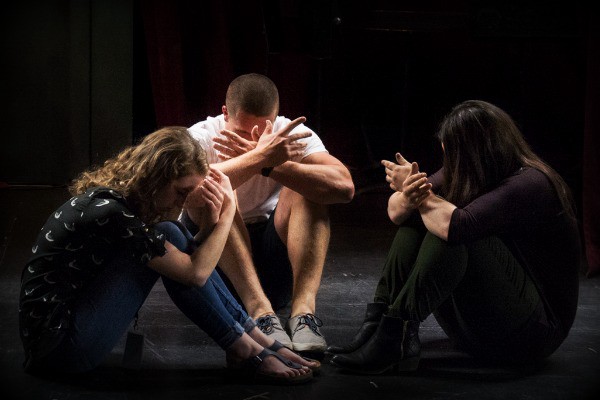
After spending hours designing an engaging and thought provoking group activity, you are finally able to reveal it to your class. As you finish your explanation you are met with blank stares, unimpressed faces, and rolling eyes. Questions like "Do we really have to participate?" and "Aren't you supposed to be teaching me?" appear scrawled on students' foreheads. After coaxing students to finally interact, you finish the class and students pour out of the room. Disheartened, you are left to reflect on why they resisted what you thought was an excellent activity.
Unfortunately, student resistance is a common response to any type of learner-centered teaching. Research demonstrates the benefits of active learning in classrooms (Felder, 2011; Dallimore, Hertenstein, & Platt, 2017; Weimer, 2002), many students resist when faculty use teaching strategies that place them at the centre of the learning process, especially after years of teacher-centred methods. While it may be rare that students openly object to participation requests in front of a class, instructors often experience passive resistance such as a lack of enthusiasm or effort, or non-verbal confrontation. Whatever form the resistance takes, it can be disheartening and difficult to move forward with the activity; resistance may leave the instructor wondering, "what did I do wrong?"
Students resist class participation for many reasons; it may not be anything the instructor did at all! Students enter our classrooms with preconceived notions of what teaching and learning entail (Seidel & Tanner, 2013), and changing these notions can prove difficult. Many students, particularly early in their program, may still believe that knowledge only comes from an expert, such as the instructor or textbook. This change in responsibility, from teacher-given to student-created learning, may lead some students to long for the days when they just had to learn what they were told to learn from their teachers (Weimer, 2002) - after all it's much easier to make decisions on what counts as knowledge when someone else tells us what to know. This may be why students are not always thrilled when we ask them to take on more responsibility for their own learning (Felder, 2011). Participating in class means more work for students since learning becomes a strenuous activity; yet, this increase in cognitive load also shows that students are engaging with content more than with passive modes of learning (Weimer, 2002). Students resist active learning for a variety of reasons; while instructors may not be the cause of the resistance, they should still try to ease the transition from a passive to an active learning environment.
But, how can we do this?
While an instructor cannot overcome resistance for students, an instructor can help students overcome resistance for themselves (Weimer, 2002). This might include varying teaching methods (Seidel & Tanner, 2013), clearly and explicitly explaining pedagogical choices and reasons for these decisions (Felder, 2011; Seidel & Tanner, 2013, Weimer, 2002), and being prepared to teach students the skills they may not yet have experience with, such as effective group communication.
When peer to peer learning is added to the mix, as an instructor, it's important to remember that your students might not be familiar with this and could feel ill prepared to learn from their peers - so it's up to you as the instructor to let the students know how to master the skills and knowledge needed to accomplish this request (Weimer, 2002);. Finally, and most importantly, be confident and commit to including classroom participation (Weimer, 2002; Seidel & Tanner, 2013). It's about changing your approach to teaching; we must think beyond the pursuit of new techniques for the classroom (Weimer, 2002). By consistently using participatory classroom strategies, students can build confidence and skill in active learning, helping them overcome their initial resistance.
On Thursday, May 4, 2017, the Festival of Teaching and Learning will host Dr. Maryellen Weimer who will be speaking about classroom participation and how to make it happen. Please join us for this conversation at ECHA L1-190.
Citations
Dallimore, E., Hertenstein, J., & Platt, M. (2017, March 27). How do students learn from participation in class discussion. Faculty Focus: Higher Ed Teaching Strategies from Magna Publications. Retrieved from http://www.facultyfocus.com
Felder, R. (2011). Hang in there! Dealing with student resistance to learner-centered teaching. Chemical Engineering Education, 45(2), 131-132.
Seidel, S. & Tanner, K. (2011). "What if students revolt?" - Considering student resistance: Origins, options, and opportunities for investigation. CBE - Life Sciences Education, 12(4), 586-595.
Weimer, M. (2002). Learner-centered teaching: Five key changes to practice. San Francisco, CA: Jossey-Bass.

Ellen Watson, B.Sc., B.Ed., M.Ed - Educational Developer, Centre for Teaching and Learning
In her role as an Educational Developer at the Centre for Teaching and Learning (CTL), Ellen assists university instructors in designing effective lessons and courses, reflecting on their teaching, and deepening their teaching skills. Ellen has over 8 years of teaching experience in both secondary and post-secondary environments and is currently developing her educational research portfolio.